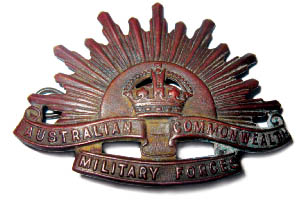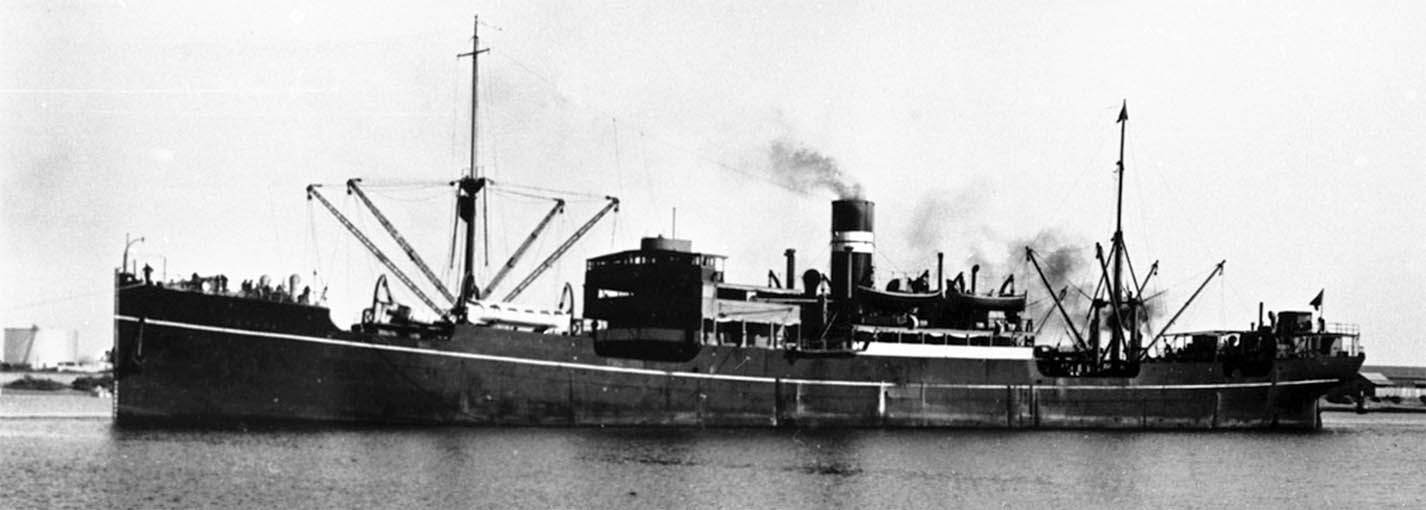Cap Badge of the Australian Infantry
William was born in Woodbridge in 1881 and, in 1901, he was working for the Great Eastern Railway as a porter. By 1906, he had moved to Edmonton in London where, on 6th August, he married Florence Mullins. In 1911, they were living at 110 Croyland Street in Edmonton and William was working as a signalman for the Great Eastern Railway.
On 20th July 1912, the couple boarded the SS Gothic bound for a new life in Australia. They disembarked in Sydney, New South Wales, before moving on to Freemantle in Western Australia where William was planning to work as a farming contractor.
When war broke out in Europe, the number of Australians who volunteered to enlist was so high that the recruitment officers had to turn people away. By 1916, however, the Australian Government was considering bringing in conscription, due to the dwindling numbers of volunteers. William and Florence were living in Winchester near Freemantle when he decided to enlist. He travelled to Perth and, on 8th February 1916, he joined the 15th Reinforcements in the Australian Imperial Force.
The Troopship Surada brought William to Britain in 1916. She was later sunk by a U-boat in the Mediterranean on 2nd November 1918.
On 22nd September 1916, William and his fellow volunteers boarded the SS Suranda for the journey to England. They disembarked almost two months later, on 20th November. In March the following year, William was posted to France, joining the 28th Battalion, Australian Infantry who were in the Baupaume area of France.
William’s time in France was short as, on the 3rd May 1917, he was wounded, receiving a gunshot to his shoulder. He was treated first at the 5th Australian Field Ambulance before being quickly moved to the 3rd Australian Casualty Clearing Station at Grevillers. From there, he was transported to the 5th General Hospital in Rouen, before being sent to England for treatment. William was taken to the Grove Military Hospital in Richmond, Surrey, where he remained until the end of June.
Once discharged from the hospital, William was posted to the training school based at Jellalabad Barracks in Tidworth, Wiltshire. William remained with the training school until he was sent home, embarking on the HMT Lancashire on 7th February 1918. He was finally discharged from the Australian Army on 28th April 1919.
For his war service, William received the British War and Victory Medals.
